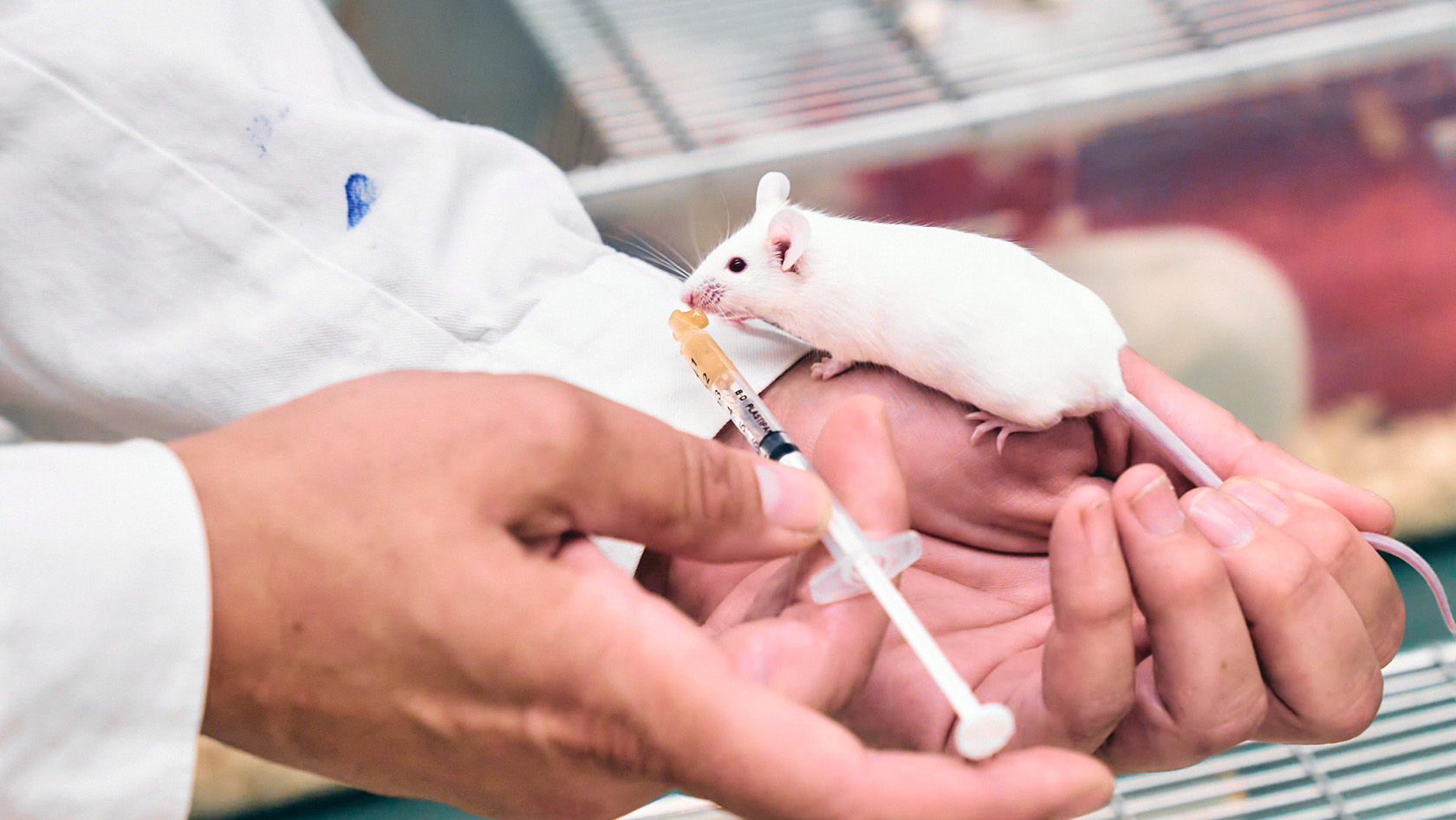Less Stress, Better Research
Urs Meyer, professor at the Institute of Veterinary Pharmacology and Toxicology at UZH, and his team have developed a new method of orally administering pharmaceutical substances to mice. The new method benefits both the animals and the researchers. The method will now be rolled out more widely as part of the National Research Programme 79, “Advancing 3R”.

According to Swiss law, before new substances can be trialled on humans, they must first be tested on animals. Because the majority of therapeutic compounds are intended to be taken by mouth, they are also administered to mice and rats orally in the testing phase. How does it usually work?
Urs Meyer: By far the most commonly used method to orally administer substances to rodents is called oral gavage. With this method, the substance is administered via a tube inserted into the animal’s oral cavity and down into the stomach. To do this, the researcher needs to keep tight ahold of the animal’s neck, which is a tricky business if the animal doesn’t want to ingest the unknown substance, for example because it tastes bad.
So the ingesting of the substance by the animal is a completely involuntary process?
Yes, that’s right. The key point for the researchers is that this method enables them to control the dosage and timing. It is also possible to give a substance via drinking water or food, which is obviously less stressful for the animals. But the problem is that the researchers then do not know exactly how much the animal ingested and when.